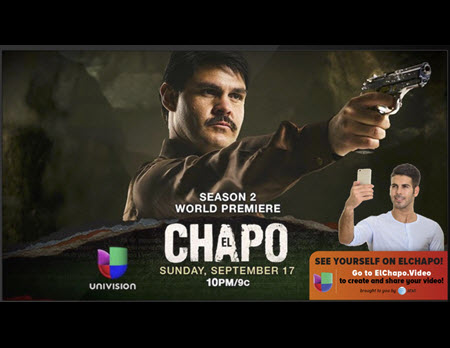When Television Meets User-Generated Content

Live TV isn’t dead, but it could sure use a jolt.
Networks have increasingly used Twitter, Facebook and other social-media outlets to further engage with their viewers, but a startup called Vivoom is looking to take that interaction to another level by enabling viewers to insert themselves digitally into live TV broadcasts.
The basic idea, in the TV context of Vivoom’s technology platform, is to have viewers record and post video of themselves that a programmer, can in turn, splice into a show — essentially a digital cameo.
Katherine Hays, Vivoom’s co-founder and CEO, has a keen eye for identifying trends in changing consumer behaviors.
Her last company, Massive, created an advertising network for video games. That effort — which for example inserted ads into the context of games with first-person shooters — helped Massive aggregate that audience and, according to Hays, reach as many 18-to-34-year-old men as any TV network. Microsoft bought Massive in 2006 for $280 million and reportedly shut down that unit in the fall of 2010.
Spotted: Consumer Behavior Shift
Hays said that in 2014 she saw an even bigger trend: that consumers, especially those younger than 40, tend to share their lives on social media outlets such as Facebook, Instagram, Twitter and Snapchat.
“This is an incredible change in consumer behavior, and there are real implications for products,” she said about what was going through her head as she delved deeper into this trend. “What if we can build a technology that helps every product be shareable?”
Though consumers can go direct to Twitter and Instagram to share directly, brands lose control of the relationship with the consumer (and the associated data) when they go that route, she stressed.
Vivoom’s approach is to enable partners to have more control of those shareable interactions (and open up the doors to monetization) with their products and services, while still enabling consumers, particularly younger ones, to distribute that content directly to various social networking channels.
Vivoom has since built the technology to make its idea go, and has already signed on several brands, companies and pro sports teams. They include Microsoft, Capital One, Johnson & Johnson, Maroon 5 and two National Basketball Association teams, the Boston Celtics and the Los Angeles Clippers. Univision is the first TV programmer to come aboard.
“It’s really across industries, because almost everything can be shareable … and with our technology, brands are able to do that in a way that they can know that user and they can control that user’s experience,” Hays said.
The Vivoom and Univision partnership was announced in September at the Mobile World Congress Americas show in San Francisco.
They haven’t gone commercial with the relationship yet. But at the event they showed a mock-up of how viewers of El Chapo, the series about drug trafficker Joaquín “El Chapo” Guzmán, could go about inserting themselves into a scene from the show (pictured).
In that demo, a bug would appear at a bottom corner of the screen directing viewers to shoot a video of themselves and explain how to upload it to Univision (via a website or through the programmer’s app, for example). The network would then pick one and insert it into that night’s broadcast.
“Their No. 1 goal,” Hays said of Univision’s work with Vivoom, “is to increase audience engagement with television” — particularly during commercial breaks, when viewers tend to divide their time with online social networks.
Other goals include driving more tune-in through the sharing aspect of the model, and monetizing the concept through sponsorships.
Hays said Vivoom’s technology is applicable across multiple types of programming, including awards shows, sporting events and entertainment series and dramas.
Though Univision has focused on second-screen engagements through elements like voting and trivia, those have generally been relegated to “isolated” experiences, Matt Kaplan, senior vice president of digital ad sales at Univision, explained during a panel session with Hays at the event. “The shift we’re seeing is about sharing,” he said, describing what’s coming as “Second-Screening 2.0” for TV networks.
Partners Already in Sharing Mood
Vivoom uses a set of technologies to underpin its platform. The first is in the form of a perpetual license to use Boris FX’s Sapphire visual effects engine for mobile that enables Vivoom to be creative in how viewers are inserted into a scene. Vivoom also has some patent pending technology around moderating capabilities that enables a brand gain control of what they are obtaining from consumers and viewers before it is published to the world. A third piece is a client portal that lets networks insert user-generated content into a linear broadcast.
There are several examples of how Vivoom’s technology has been used outside of the broadcast TV world to connect with fans.
Maroon 5, the pop band, has utilized the platform in ways that lets fans put themselves on the cover of its new album, Red Pill Blues, and insert themselves into a scene from its music video for the single, “Cold.”
During last year’s NBA Playoffs, the Boston Celtics enabled fans to shoot and share videos with branded filters that were republished and shown on the jumbo-tron at TD Garden, the team’s home arena.
The smarter way to stay on top of the multichannel video marketplace. Sign up below.
